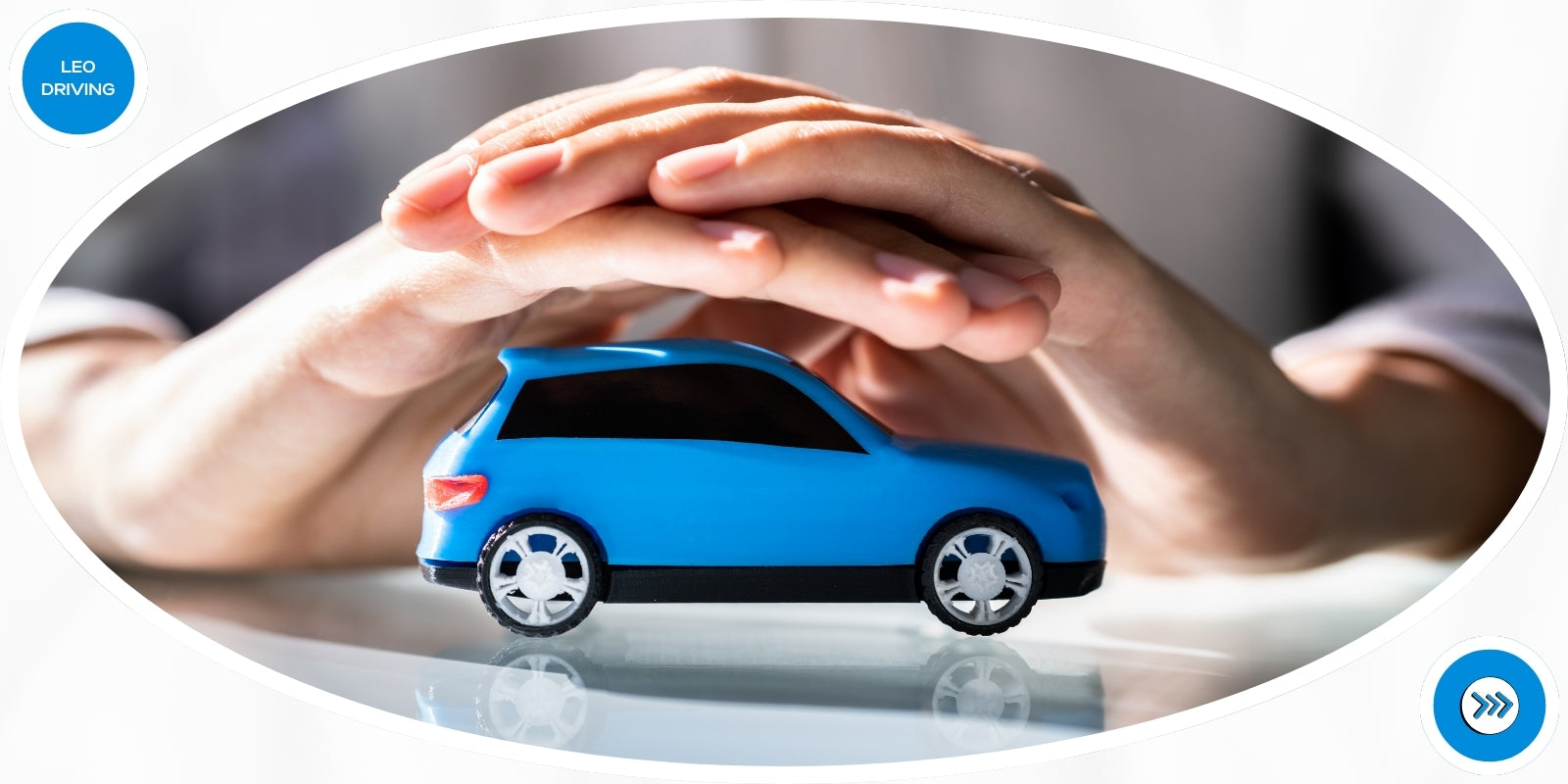
Practicing Driving Outside Lessons: What You Need to Know
It goes without saying that the best person to teach you how to drive is a qualified driving instructor. While your mum, dad, or best friend might be skilled drivers, they likely have their own bad habits—and you'll want to avoid picking them up! Nevertheless, spending extra time behind the wheel with friends and family between lessons with an instructor is a smart approach. However, practising outside lessons does come with a few complications.
To help clarify things, we've created this helpful guide to cover the ins and outs of private driving practice. We’ll discuss the advantages and disadvantages of learning with friends and family, the laws surrounding practising driving outside lessons, and answer a few common questions.
Let’s dive in!
Who Can I Practice Driving With?
If you’re eager to get out on the road, you’ll likely want to practice driving outside your lessons. Before you start asking everyone you know, though, make sure you’re legally allowed to practise with them. You can’t just practice with any driver!
The government has laid out some rules about who can supervise a learner driver. These rules are not overly strict, but they do ensure that you practice with experienced drivers. This makes sense, as you’ll learn much more from a confident, skilled driver than from someone who's just passed their test! Specifically, anyone you practice with must:
- Be over the age of 21
- Hold a licence to drive the type of vehicle you’re practising in (such as a manual or automatic car licence)
- Have held their licence (from the UK or an EU/EEA country) for at least three years
It’s important to note that these rules apply to those supervising you outside lessons, whereas the process of becoming a qualified driving instructor is much stricter. Also, while someone is allowing you to practise with them, any rules that apply to you as the driver also apply to them. So, it’s illegal for both you and your supervising driver to use a mobile phone or drive under the influence of alcohol or drugs.
Will I Need Insurance to Practice Outside Lessons?

In short, yes, you always need insurance to drive legally on UK roads. When you’re learning with an instructor, the lesson fee typically covers the insurance. However, when you’re practising privately, you’ll need to arrange this yourself.
Keep in mind that the car owner's existing insurance won’t be sufficient! To practice in someone else’s car, you must have insurance that covers you to drive it. You have several options, depending on factors such as the pace of your lessons, your test date, and whether you're driving your own car or someone else’s. Your options include:
- Joining the car owner’s existing policy as a named driver
- Getting short-term insurance for either your own or someone else’s car
- Taking out annual insurance — a great option if you’re learning to drive in your own car
There’s a lot of detail to consider, but we’ve already covered it in our comprehensive guide to learner driver insurance. If you’d like to know more, feel free to have a look!
Driving without insurance can result in serious penalties, including an unlimited fine, a driving ban, and up to 6 points on your licence.
Are There Any Other Rules or Restrictions I Need to Be Aware Of?

We’ve covered the main regulations, but there are a few more rules to be aware of to ensure you're on the right side of the law.
- L Plates: Just like in your lessons, you must display L plates when practicing. If you're driving someone else’s car and they’re not a learner, they must remove the L plates when they drive.
- Motorway Driving: Learners can now drive on motorways, but only if accompanied by an approved driving instructor (ADI). If your supervising driver isn’t an ADI, you’re not allowed on the motorway. This is yet another reason to make the most of motorway lessons with your instructor.
- Eyesight Rules: Just like you, your supervising driver must meet the eyesight requirements for driving. If they need glasses or contact lenses to drive, they must wear them while supervising you.
- Car Safety: It’s the responsibility of the supervising driver to ensure the car is in a safe and legal condition. This includes having a valid MOT certificate to ensure its roadworthiness.
Should I Pay the Person I’m Practising With?

Only DVSA-approved driving instructors (ADIs) or potential instructors with a trainee license (PDIs) can charge for lessons. You can identify an ADI by the green badge on their car, or a pink badge for a PDI.
If your supervising driver is neither an ADI nor a PDI, it’s illegal for them to charge you for the lesson. However, you might need to contribute towards the cost of fuel or your share of the insurance. But remember, you should never pay them for the lesson itself.
Can Private Practice Replace Lessons with an Instructor?

If you’re fortunate enough to have someone willing to let you practice driving in their car—or if you’ve convinced your parents or friends to help—you might be tempted to skip paying for professional lessons altogether. Given the cost of learning to drive, it’s understandable that many learners want to save money. However, private practice should supplement lessons with an instructor, not replace them. There are several good reasons for this.
Firstly, as mentioned earlier, many experienced drivers develop bad habits over time. Some may even pass on incorrect advice, such as not needing to stop at a stop sign or, in extreme cases, using their knees to steer! While these stories from insurance surveys may be rare, it’s true that non-instructors are unlikely to be fully up to date with modern driving test requirements.
For example, it was only in December 2017 that pulling up on the right became part of the driving test. Around the same time, following sat nav directions was added as a key test element. A friend or relative might not be aware of these updates, whereas licensed instructors undergo continuous professional development to stay on top of changes. This ensures they can teach you the latest techniques, helping you prepare effectively for the test. Private practice alone simply cannot match this level of expertise.
The Pros and Cons of Practising Outside Lessons
While lessons with an instructor are crucial for becoming a safe and skilled driver, practising outside lessons can be highly beneficial. Here’s a breakdown of the advantages and disadvantages:
Pros:
- Extra practice helps build skills, confidence, and muscle memory.
- You can gain more experience behind the wheel without paying for additional lessons.
- You have the freedom to practise on any road (except motorways) at any time of day.
- Practising close to home gives you a taste of real-world driving scenarios.
Cons:
- You’ll need to pay for learner driver insurance.
- A supervising driver’s advice may conflict with what you’ve learned from your instructor.
- Adjusting to a different car might be confusing.
- Supervising drivers typically don’t have dual controls, so they cannot step in during emergencies.
Practising outside lessons generally has a positive impact, reinforcing what you’ve learned with your instructor and helping you develop a routine. Plus, you might even teach your supervising driver something new!
Practising Outside Lessons: Frequently Asked Questions
1. Where can I practise driving outside lessons?
You can drive on any road except motorways when practising outside lessons. Whether it’s a busy dual carriageway or a quiet country road, choose a route that matches your skill level. For example, if you’ve only driven on side streets with your instructor, avoid heading straight onto a major A-road.
2. Should I practise a skill I haven’t learned with my instructor?
It’s best to avoid trying new skills without your instructor’s guidance. For example, attempting parallel parking without supervision could result in costly mistakes, such as hitting a parked car. Instructors have dual controls to prevent accidents, which is rarely the case with private vehicles.
3. Can I practise at any time of day?
Yes! Unlike some countries, the UK imposes no curfews on learner drivers. You can even practise at night, which is a good idea as night driving is an essential skill you’ll likely need in the future.
4. Where should the supervising driver sit?
While a supervising driver can technically sit anywhere in the car, it’s strongly recommended they sit in the front passenger seat. This allows them to provide better guidance and respond more effectively in emergencies.
5. How many passengers can I carry while practising?
There’s no legal limit on the number of passengers you can carry, as long as the vehicle can accommodate them. However, a crowded car can be stressful for a learner driver, so it’s best to limit passengers to just one or two.
6. Can a supervising driver have points on their licence?
Yes, a supervising driver can have points on their licence, provided they’re still legally allowed to drive. However, if their licence has been revoked (e.g., for accumulating 12 or more points), they cannot supervise a learner.
7. Who is responsible if there’s an accident during private practice?
As the person behind the wheel, the learner driver is typically responsible in the event of an accident. Supervising drivers primarily provide verbal guidance and cannot physically intervene unless the car has dual controls. Additionally, learners must adhere to all rules in the Highway Code, and any driving offences will be attributed to them.
At Leo Driving School, we believe in the value of combining professional lessons with private practice. Professional instructors provide the expertise and training needed to pass the test, while private practice helps you gain additional confidence and experience. For the best results, strike a balance between the two approaches on your journey to becoming a skilled and confident driver.

